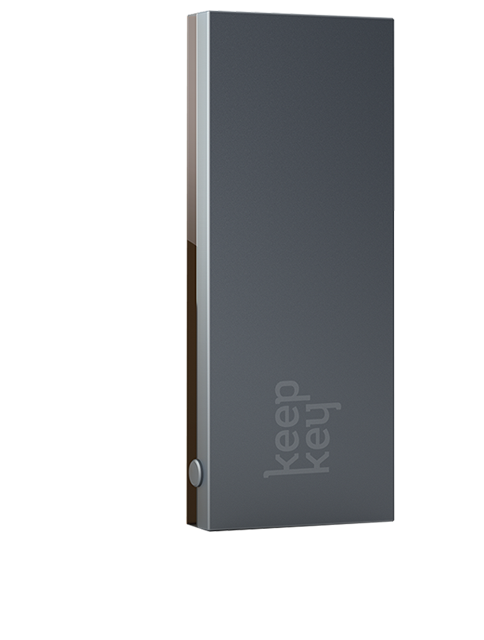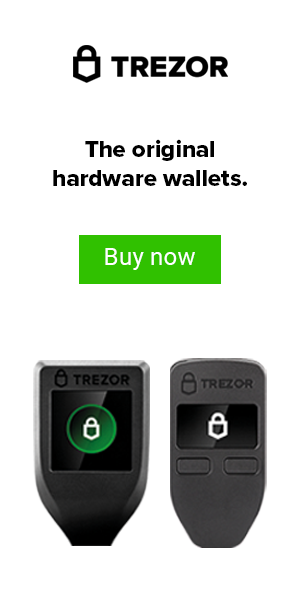You Might also like
-
Ledger STAX Crypto Hardware Wallet — FIRST LOOK (2022)
Post Views: 0 -
Protecting $1,000,000 Bitcoin With This $59 Device?
Post Views: 0 -
Is There A Hardware Wallet That Can Store The Top 30 Cryptocurrencies?
Is There A Hardware Wallet That Can Store All The Top Cryptocurrencies? I get this question a lot, and to be honest, there is no clear way to answer it. It ultimately depends on what you believe is the “Top Cryptocurrency”. As a newcomer into the cryptocurrency market, you start to learn the best practices for managing and storing cryptocurrencies and you will inevitably find that yes, a hardware wallet is your safest and best choice. The second question that usually follows that is, “What is the best one? Which one should I buy?”
The answer is not so simple, but I will lay out some of the pros and cons of each of the featured cryptocurrency hardware wallets being promoted and offered through this website, because they have been personally vetted by myself and my team. Each wallet will support different variations of altcoins, but all of them support 3rd party wallet integration such as MyEtherWallet and Mycelium. These are commonly used for ERC-20 token support and most upcoming STO’s will be supported as well as a lot of them are supported by the same protocol.


There is currently no hardware wallet that supports every single “Top Cryptocurrency By Market Cap”. Why? Well for one, the market cap rankings tend to shift almost everyday based on trading volume and various product releases, news events, protocol, and network upgrades. However, there have been some pretty consistent coins that, until recently, haven’t had hardware wallet support such as Monero or Ripple.
I am going to list the 3 major hardware wallets below: Trezor, Ledger, and Keepkey. With them, I will have some recent support added to each wallet and a link to each wallet’s fully supported coin list.
This should answer the general questions you have about coin support and you will be able to identify if there is a particular coin you are searching for and whether or not it’s supported. Please note that each wallet is constantly updating support for new (and old) altcoins to be supported, so this list may be outdated as soon as a few months.
#1 TREZOR
There are two versions of Trezor: Trezor One and Trezor Model T. The former is the entry level device that came out 2013 and has since received regular firmware upgrades enhancing it’s security and adding new software support for native and 3rd party applications for new coins. In 2018, they released their 2nd-gen product called the “Model T“. The latter is a larger device with touch screen and is operated by a “Beta” wallet that supports over 1,000 coins between it’s native applications and 3rd party integration.
Most recently, they added NATIVE support (which is a huge upgrade in my opinion) for Ethereum (ETH) and Ethereum Classic (ETC). This means it is connected to its unique application that was custom designed by Trezor to manage your ETH accounts directly in the app. Previously, any ETH or ERC-20 based token required to use a 3rd party wallet, which was annoying and cumbersome.
I understand there is a lot of development work that goes into creating and managing any native app, but Ledger and Trezor already had native support for this, (as they should) considering it’s been in the top 3 coins by market cap consistently for years.
Bottomline: They have upgraded some basic functionality, which is good, and to their credit they have added support for some coins that really need it, such as Monero and Tether. This is of course when their team collaborates and helps build a supported wallet to tie into their code base. They have been building a foundation for the future and that is going to work in their favor as soon as each coin’s respective dev team decides to catch up.


-Binance Coin (BNB)
-Monero (XMR)
-Cardano (ADA)
-Ravencoin (RVN)
-Tether (USDT) *Stable coin*
#2 KEEPKEY
Keepkey has always been a favorite of mine, as it’s a solid design and very sleek and stable frame that just feels good when you hold it in your hands. Now let’s get into the nitty-gritty. For years, Keepkey only supported: Bitcoin, Litecoin, Ethereum, Namecoin, Dogecoin, and Dash.
For a hardware wallet that needs to compete in this market place, that needed a serious upgrade. Luckily, they have been making some AMAZING changes and not only added a ton of ERC-20 Support, but more importantly, they are revamping their entire platform to have one fluid, seamless application that integrates all of their core services (See my previous post for details on this).
This is extremely powerful, and a decision that I believe will catapult them ahead of the competition. They are currently in a closed beta, and it is expected that they will be releasing this later in 2019. Stay tuned for news on this.
Bottomline: Keep an eye out for the newest upgrades and the new platform that is coming soon. I hope to gain access to the private beta soon, and if given access, I will ask permission to write a review for your guys.


-Basic Attention Token (BAT)
-DigixDAO (DGD)
-Augur (REP)
-Polymath (POLY)
-TrueUSD (TUSD) *Stable coin*
#3 LEDGER
Ledger is considered “The most recommended hardware wallet” on the market. The simple reason for this is because it’s cheap (low barrier to entry) and they have been working on upgrading their infrastructure and recently released Ledger Live, which is their new desktop (and iOS) application for managing all of your coins. This is much better than their previous solution of using a chrome extension to access the UI, but Ledger Live is not without it’s quirks.
Overall, the UI is pretty clean and is pretty straight forward in terms of first time setup and detects your device when it’s plugged into the USB port and asks you to authenticate to view the app. The one thing most people don’t understand is the Ledger Nano S has very little RAM, so even though they advertise that it supports over 1,100 coins, you can only have approximately 8 or 9 coin apps installed at once on your device. You will want to make sure you choose your coins wisely and perhaps get multiple devices if you want to diversify and/or use a 3rd party wallet as mentioned above to manage more coins on the same device.
Bottomline: It’s not perfect, but it has made some good improvements over the last year and is continually updating it’s coin support. I will list below some of the coins that are supported on Ledger currently that are not yet available on other platforms, which brings it’s edge.


-Ripple (XRP)
-EOS (EOS)
-Tezos (XTZ)
-QTUM (QTUM)
-USD Coin (USDC) *Stable coin*
CONCLUSION
I realize that may not answer all of your questions or solve all of your problems, but it really just comes down to preference. If you already know what coins you plan to accumulate, then I would click the links under each section that has the “Newest Notable Coins Added” to a link to each coin supported by each wallet, currently. I use every single one of these and have different coins on each depending on what my needs are and what exchange I accumulate them from.
It might be a good idea to place your wallets in terms of “buckets”. What I mean by that is if you plan to trade and hold long term, perhaps it’s best to have one wallet for each purpose. This not only allows you to diversify, but it keeps things organized based on what your short term and long term goals are for accumulating and for accessing exchanges.
If you have any questions or comments on this post, please sound off below! I’d love to hear from you! Until next time…
Cheers,
The Crypto Renegade
NOTE: This post may contain affiliate links. This adds no cost to you but it helps me focus on giving as much value as possible in every single post by being compensated for recommending products that help people succeed.
Post Views: 0











